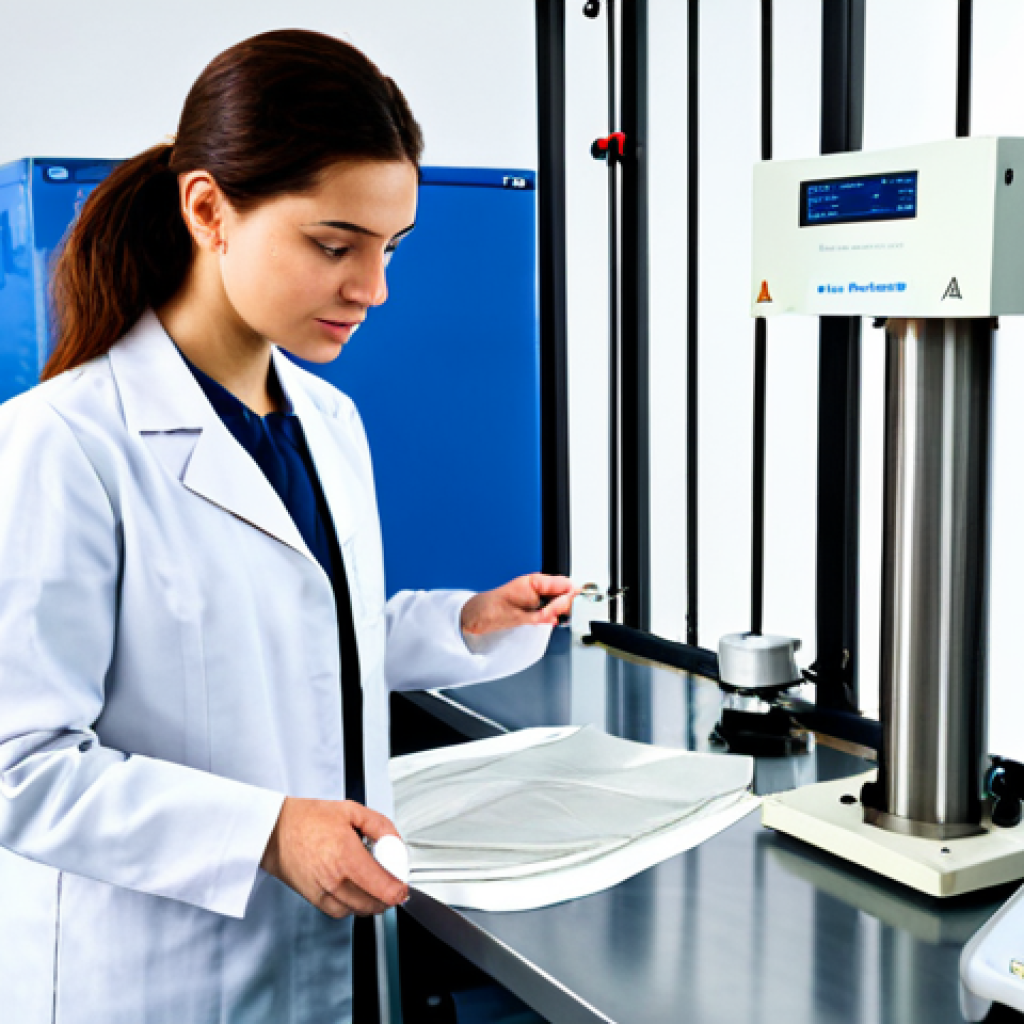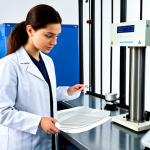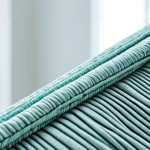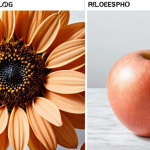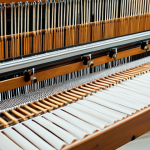Stepping into a textile engineering lab for the first time, I remember feeling a mix of awe and sheer bewilderment. All those gleaming machines, dials, and intricate setups — it was like walking onto the set of a futuristic sci-fi movie, each piece whispering tales of innovation and precise material science.
But it’s not just about the awe; it’s about understanding that these aren’t merely tools; they are the gatekeepers of quality, the arbiters of performance, and the very foundation upon which textile breakthroughs are built.
Forget outdated notions of just yarn and fabric; in today’s world, we’re talking about smart textiles that monitor your health, sustainable fibers that heal the planet, and advanced composites that are lighter yet stronger than steel.
Navigating this dynamic landscape demands a deep familiarity with the experimental equipment that validates these cutting-edge materials. From advanced spectrophotometers ensuring color consistency to sophisticated tensile testers pushing the limits of new eco-friendly blends, and even conductivity meters for our increasingly integrated wearable tech, the right gear is non-negotiable.
Believe me, mastering these instruments is key to unlocking the true potential of tomorrow’s fabrics and staying ahead of the curve. Let’s explore it in detail below.
The Silent Guardians of Strength: Unraveling Material Durability

Stepping into the lab, one of the first machines that really caught my eye, beyond just looking impressive, was the Universal Testing Machine. I remember thinking, “So *this* is how they know my hiking pants won’t rip when I scramble over rocks!” It’s more than just a piece of equipment; it’s where a fabric’s true grit is put to the test, where the silent battles against tearing and stretching are fought.
Every time I see a piece of performance wear or even something as simple as a backpack, I instinctively think back to the numbers generated by this machine.
It’s not just about breaking a sample; it’s about understanding the very limits of what a fiber or fabric can withstand, pushing the boundaries of its design.
My personal experience has shown me that the data from these tests directly translates into real-world confidence, whether it’s in the robust durability of a mountaineering rope or the subtle stretch and recovery of a yoga outfit.
This isn’t just about laboratory precision; it’s about ensuring the clothes we wear, the car seats we sit on, and the filters that clean our air, perform reliably, day in and day out.
It’s where the theoretical strength meets practical application, giving designers and engineers the critical insights they need to innovate.
Understanding Tensile and Tear Strength
When we talk about tensile strength, we’re talking about the absolute maximum stress a material can withstand while being stretched or pulled before it breaks.
It’s a fundamental property, and getting it right is non-negotiable for safety-critical applications like seatbelts or parachutes, but equally vital for ensuring your denim jeans last more than a few washes.
My first time actually operating the Universal Testing Machine, carefully clamping the textile sample and watching the stress-strain curve climb on the screen, was truly eye-opening.
You could literally see the fabric giving way, point by point, and then the dramatic drop when it snapped. It’s a powerful visualization of raw material integrity.
Similarly, tear strength focuses on a fabric’s resistance to tearing once a small cut or defect is introduced. Think about that annoying small rip in your shirt that suddenly becomes a massive gash – low tear strength is often the culprit.
Various methods, like the Elmendorf tearing method or trapezoid tear method, are employed to simulate real-world tearing forces, ensuring that a minor snag doesn’t lead to catastrophic failure.
It’s all about building resilience into the very threads of our everyday lives.
The Art of Bursting and Pilling Resistance
Beyond simple pulling and tearing, textiles are subjected to a myriad of complex forces. Bursting strength, for instance, is crucial for materials that need to withstand multi-directional pressure, like knits used in activewear or the fabric of a medical gown.
Imagine the stress on the fabric of a tightly fitting sports bra during an intense workout; it’s not just pulling in one direction. A hydraulic or pneumatic bursting strength tester simulates this by applying pressure uniformly over a circular area until the fabric ruptures.
It’s a fantastic indicator of how well a fabric will perform under dynamic, unpredictable loads. Then there’s the universal annoyance of pilling, those tiny, fuzzy balls that form on the surface of fabrics after wear and washing, making garments look old and worn out prematurely.
Machines like the Martindale Abrasion Tester or the ICI Pilling Box are used to abrade fabrics in controlled ways, accelerating the pilling process so that manufacturers can assess resistance.
It’s a fascinating, almost artistic, process to watch samples degrade under controlled conditions, and it truly highlights the difference between a fabric that holds its aesthetic appeal over time and one that quickly loses its charm.
Beyond the Hues: Precision in Color Science and Appearance Testing
The moment I started working with color, I realized it’s not just about mixing paints or picking a shade; it’s a deeply technical field, especially in textiles.
I can vividly recall a frustrating incident early in my career where two batches of fabric, supposedly the same “navy blue,” looked completely different under different lighting conditions.
That’s when the sheer necessity of precise color measurement equipment truly hit me. It’s not just about making things look pretty; it’s about brand consistency, consumer expectations, and preventing massive financial losses due to shade variations.
This isn’t just an art; it’s a science grounded in light and perception. When you’re dealing with global supply chains, where yarns are dyed in one country, woven in another, and assembled in a third, absolute color precision becomes paramount.
It directly impacts whether consumers will buy your product, trust your brand, and return for more. The subtle differences that our eyes might miss, or might interpret differently based on ambient light, are ruthlessly exposed by these advanced instruments, ensuring that “true blue” remains truly blue, everywhere, every time.
Mastering Color Consistency with Spectrophotometry
For anyone serious about textile production, a spectrophotometer isn’t just a piece of equipment; it’s practically a third eye. This sophisticated device measures how much light a textile reflects or transmits at different wavelengths across the visible spectrum, generating a unique “fingerprint” for every color.
It completely eliminates subjective human judgment, which, let’s be honest, can be wildly inconsistent from person to person, or even from morning to evening for one individual!
My own experience with struggling to match a specific corporate logo color for a uniform order was instantly solved the moment we started relying solely on spectrophotometer readings and delta E values.
It’s incredible to see how a numerical value can define a color with such precision that it can be replicated perfectly, time and again, across different batches and even different manufacturing plants around the world.
This level of accuracy is what allows global brands to maintain their signature shades, regardless of where their products are made or sold. Without it, you’re just guessing, and in the world of fashion and home goods, guessing can be an incredibly expensive mistake.
Assessing Colorfastness: Withstanding the Elements
What’s the point of a beautifully colored fabric if that color fades away after a few washes or a summer’s day in the sun? Colorfastness testing is all about putting textiles through simulated real-world stresses to see how well their dyes hold up.
Think about your favorite pair of jeans, how they’ve probably faded over time. We conduct tests for colorfastness to washing using a Launder-Ometer, which vigorously tumbles fabric samples with specific detergents and water temperatures, mimicking repeated home launderings.
Then there’s lightfastness, which is absolutely critical for outdoor textiles like awnings, patio furniture, or even car interiors. Xenon arc lightfastness testers blast fabrics with intense, controlled UV light, simulating years of sun exposure in just days or weeks.
And it’s not just washing or light; we also test for colorfastness to perspiration, rubbing (crocking), dry cleaning, and even chlorinated water for swimwear.
It’s a comprehensive assault course designed to ensure that the vibrant red shirt you bought stays vibrant, not a washed-out pink, whether you’re sweating in it, rubbing against it, or enjoying a dip in the pool.
This rigorous testing ensures consumer satisfaction and reinforces brand reliability.
The Invisible Touch: Ensuring Comfort and Feel in Next-Gen Textiles
When I first started in textile engineering, I was so focused on strength and color that I almost overlooked something equally, if not more, important: how a fabric *feels* against the skin and how it interacts with the human body.
It wasn’t until I started delving into performance wear and smart textiles that I truly grasped the critical role of comfort and tactile properties. You can have the strongest, most vibrant fabric in the world, but if it feels scratchy, stifling, or clammy, no one will wear it.
This is where a different set of instruments comes into play, measuring properties that aren’t immediately obvious but are profoundly impactful on our daily lives.
From the airy lightness of a summer dress to the insulating warmth of a winter coat, the science of textile comfort is about more than just aesthetics; it’s about enhancing the wearer’s experience.
It’s about creating materials that breathe with you, adapt to your body temperature, and move seamlessly with every gesture. My personal turning point was when I tried on an innovative athletic shirt that just *felt* right – not too warm, not too cool, and incredibly soft.
I later learned this was due to meticulous testing for air permeability and thermal resistance, proving that comfort is indeed a measurable and engineered quality.
Breathability and Air Permeability: The Unsung Heroes of Comfort
Have you ever worn a jacket that makes you feel like you’re wrapped in a plastic bag, sweating profusely even on a cool day? That’s likely a fabric with poor air permeability.
This property, measured by specialized air permeability testers, quantifies how easily air can pass through a textile. It’s incredibly important for activewear, medical textiles, and even protective gear where ventilation is critical.
A strong draft of air is pulled through a clamped fabric sample, and the instrument precisely measures the airflow rate, giving us a numerical value for its “breathability.” For sportswear brands, this isn’t a luxury; it’s a selling point.
Consumers want fabrics that wick away sweat and allow air circulation, keeping them comfortable during strenuous activities. It’s fascinating how a fabric can be waterproof yet breathable, thanks to micro-porous membranes that allow water vapor (sweat) out but keep liquid water from coming in.
Understanding and optimizing air permeability is a cornerstone of designing textiles that genuinely enhance performance and comfort, rather than hinder it.
Drape, Handle, and Beyond: Quantifying Textile Aesthetics
Beyond the technical performance, the “feel” and aesthetic flow of a fabric—its drape and handle—are what often draw us to it in the first place. The “handle” refers to the collective sensory response when a fabric is touched, encompassing qualities like softness, stiffness, smoothness, and fullness.
While traditionally subjective, instruments like the Fabric Touch Tester attempt to quantify these attributes by measuring properties like friction, compression, and bendability.
A fabric’s “drape” refers to how it hangs and folds under its own weight, a crucial factor for fashion apparel, curtains, and upholstery. A drape meter, for instance, measures the shadow area cast by a circular fabric sample draped over a smaller disc, calculating a drape coefficient.
My own experience in tailoring highlighted how dramatically different fabrics behave: a crisp cotton might stand stiffly, while a rayon flows elegantly.
These tests help designers choose the right fabrics for specific garment silhouettes and home decor applications, ensuring the final product looks and feels exactly as intended.
It’s the intersection of engineering and art, ensuring that a fabric not only performs but also delights the senses.
Electrifying Fabrics: Navigating the World of Smart Textile Instrumentation
The concept of smart textiles seemed like pure science fiction to me a decade ago. Fabrics that could light up, monitor your heart rate, or even heat themselves?
It felt impossible. But then I saw the specialized lab equipment dedicated to these cutting-edge materials, and it wasn’t just theoretical anymore; it was happening right before my eyes.
This segment of textile engineering demands a whole new set of tools, far removed from the traditional focus on strength and color. We’re talking about conductive yarns woven into everyday garments, sensors embedded in sportswear, and integrated circuits seamlessly disappearing into fabric.
My initial skepticism quickly turned into utter fascination as I witnessed precise measurements of electrical resistance and conductivity on samples that felt, to the touch, like any other fabric.
It really drives home the idea that textiles are no longer just passive materials; they are becoming active components in our increasingly connected world, transforming how we interact with our environment and even manage our health.
This evolution means that the traditional textile lab is now blending with electronics and computing, creating a truly interdisciplinary testing environment.
Measuring Electrical Conductivity in Conductive Yarns
The backbone of any smart textile that interacts with electricity is its conductive component, usually in the form of specialized yarns or coatings. Measuring the electrical conductivity of these materials is absolutely paramount.
We use highly sensitive conductivity meters and impedance analyzers, not just to see if a material conducts electricity, but to precisely quantify *how well* it does, and how that conductivity changes under stress, movement, or environmental conditions.
Imagine a sports shirt designed to monitor your heart rate; if the conductive pathways degrade with sweat or motion, the data becomes useless. My experience has shown that these measurements are incredibly delicate and require meticulous sample preparation, as even tiny variations in pressure or contact can skew readings.
We test resistance along the length of a yarn, across a fabric, and even through different layers. It’s a precise dance between material science and electrical engineering, ensuring that your wearable tech actually delivers on its promises, whether it’s a heated jacket, a biometric sensor, or an interactive display on your sleeve.
Environmental Chambers: Simulating Real-World Performance for Wearables
Smart textiles, by their very nature, are meant to be worn, used, and exposed to the full spectrum of human environments. This is where environmental chambers become indispensable.
These aren’t just fancy refrigerators; they are sophisticated test environments that can precisely control temperature, humidity, and sometimes even simulate sweat, UV radiation, or mechanical stresses.
You might wonder, “Why not just test them in real life?” Well, imagine waiting months or years for a product to fail in the field. An environmental chamber can accelerate those conditions, compressing weeks or months of real-world wear into a matter of days.
My most compelling experience with these chambers was testing a smart glove designed for extreme cold weather. We could simulate sub-zero temperatures, high humidity, and even active perspiration, verifying that its integrated heating elements and sensors continued to function flawlessly without short-circuiting or breaking down.
This kind of accelerated testing is crucial for ensuring the reliability, safety, and longevity of smart textiles, especially since they often involve sensitive electronics that are particularly vulnerable to environmental factors like moisture and extreme temperatures.
Eco-Warrior Tools: Testing for Sustainable Textile Innovation
My journey into textile engineering increasingly led me down the path of sustainability, and it became strikingly clear that “green” claims mean absolutely nothing without rigorous, scientific validation.
It’s one thing to *say* a fabric is biodegradable or made from recycled materials; it’s another thing entirely to prove it with hard data. This is where a specific suite of lab equipment, often quite different from traditional textile testers, comes into play.
It’s about measuring environmental impact, confirming responsible sourcing, and ensuring that the textiles of tomorrow don’t just look good but also do good for the planet.
I remember feeling a profound sense of responsibility and hope as I watched samples in biodegradability chambers, knowing that the insights gained there were contributing to a more circular economy.
It’s no longer enough to make a durable product; we must also ensure that its end-of-life cycle is as benign as possible. This involves everything from analyzing wastewater to ensuring that recycled fibers meet quality standards.
Assessing Biodegradability and Compostability
For textiles to truly be sustainable, we need to consider what happens to them after their useful life. Biodegradability and compostability are key indicators of a material’s environmental footprint.
In the lab, we use specialized respirometers and composting setups that simulate real-world anaerobic and aerobic decomposition conditions. Textile samples are placed in controlled environments, and we measure the CO2 output or the methane production as microorganisms break down the material.
It’s a painstaking process that can take weeks or even months, but the data is invaluable. My personal satisfaction comes from seeing a new bio-based fiber successfully break down, knowing it won’t linger in a landfill for centuries.
We also assess the quality of the resulting compost to ensure it’s not harmful to plant life. This is vital for fabrics marketed as “eco-friendly,” providing concrete proof that they will return to nature without adverse effects, closing the loop on a truly circular textile economy.
It’s a complex area, but one that is absolutely critical for the future of our planet.
Chemical Footprint: pH and Effluent Testing
The environmental impact of textile production isn’t just about the fabric itself; it’s heavily influenced by the processes used to make it, particularly dyeing and finishing.
These processes often involve chemicals, and the wastewater (effluent) discharged can be highly polluting if not managed properly. This is where precise chemical testing comes in.
pH meters are fundamental, allowing us to accurately measure the acidity or alkalinity of water at various stages of production and, critically, in the final effluent.
Ensuring the pH is neutral before discharge is essential to protect aquatic ecosystems. Beyond pH, we perform comprehensive analyses for heavy metals, dyes, and other chemical oxygen demand (COD) or biological oxygen demand (BOD) in wastewater samples.
My experience has often involved taking samples directly from dye baths and treatment plants, then bringing them back to the lab for rigorous testing, often with a slight sense of urgency.
It’s a stark reminder that sustainability isn’t just about the fabric itself, but the entire lifecycle, and that the numbers derived from these tests directly inform cleaner, more responsible manufacturing practices.
| Test Type | Primary Equipment | What It Measures | Why It Matters (Real-World Impact) |
|---|---|---|---|
| Tensile Strength | Universal Testing Machine | Force required to break a fabric/yarn | Durability of clothing, ropes, safety belts; prevents rips and tears under stress. |
| Colorfastness to Washing | Launder-Ometer | How well a fabric retains its color after washing | Ensures your vibrant t-shirt stays vibrant, prevents dye transfer onto other garments in the laundry. |
| Air Permeability | Air Permeability Tester | Rate at which air passes through a fabric | Comfort in sportswear (breathability), effectiveness of filters, protection in outerwear. |
| Electrical Conductivity | Conductivity Meter | Ability of a textile to conduct electricity | Functionality of smart textiles (heating elements, sensors), crucial for wearable electronics. |
| Pilling Resistance | Martindale Abrasion Tester | Fabric’s tendency to form pills (small balls of fiber) on its surface | Longevity and aesthetic appeal of sweaters, upholstery, preventing that “worn-out” look too soon. |
Microscopic Marvels: Peering into the Structure of Advanced Fibers
There’s something incredibly humbling, yet exhilarating, about placing a tiny strand of fiber under a powerful microscope and seeing a whole new universe open up.
My initial encounters with electron microscopes felt like stepping onto a different planet – suddenly, the smooth surfaces I perceived with my naked eye revealed intricate patterns, unexpected defects, or astonishing uniformities.
This isn’t just about looking at pretty pictures; it’s about understanding the very foundation of a textile’s performance. The internal and external structure of a fiber, its cross-section, its surface characteristics – all of these microscopic details profoundly influence properties like strength, dye uptake, luster, and even comfort.
When you’re dealing with advanced composites or biomimetic fibers designed for specific functions, the microscope becomes your primary tool for validation and quality control.
It’s where theories about material behavior are visually confirmed, and where problems at the macro level often find their root cause in the nano or micro scale.
This deep dive into the infinitesimal is what truly distinguishes cutting-edge textile engineering.
Unveiling Fiber Morphology with Electron Microscopy
While optical microscopes offer a good initial look, for truly advanced fiber analysis, especially with synthetic and high-performance fibers, electron microscopy is indispensable.
Both Scanning Electron Microscopes (SEMs) and Transmission Electron Microscopes (TEMs) provide incredibly high-resolution images, revealing details far beyond what visible light can resolve.
With an SEM, I’ve been able to see the precise surface topography of a carbon fiber, the delicate structure of a hollow-core fiber, or even the damage caused by abrasion at a microscopic level.
It’s like having superhuman vision that allows you to zoom in on the fundamental building blocks of a material. TEMs, on the other hand, allow us to peer *through* ultrathin sections of fibers, revealing internal structures, polymer chain alignments, and even the distribution of nanoparticles within a fiber.
My most fascinating experience was using an SEM to analyze a novel self-cleaning fabric; seeing the nanocoating uniformly distributed on the fiber surface was a definitive “wow” moment, confirming the technology at its most basic level.
These tools are absolutely crucial for research and development, helping engineers design fibers with tailored properties from the ground up.
Identifying Fiber Composition and Blends
In today’s complex textile market, fabrics are rarely made of just one type of fiber. Blends are common, offering synergistic properties – think cotton for comfort combined with polyester for durability and wrinkle resistance.
But how do you confirm the actual composition of a blended fabric, especially when dealing with sustainability claims or performance specifications? This is where analytical instruments like Fourier-Transform Infrared Spectroscopy (FTIR) and Differential Scanning Calorimetry (DSC) become invaluable.
FTIR, for instance, works by shining infrared light through a sample and analyzing how different wavelengths are absorbed, creating a unique spectral “fingerprint” for each type of fiber (e.g., cotton, wool, nylon, polyester).
I’ve used FTIR countless times to quickly identify unknown fibers or to verify blend percentages in garments. DSC measures how a material’s physical properties change with temperature, allowing us to identify polymers by their melting points, glass transition temperatures, and crystallization behaviors.
My personal “detective” moment involved using DSC to identify a subtle contamination in a polymer batch that was affecting fiber spinning, something that was impossible to see with the naked eye or even a microscope.
These techniques are vital for quality control, material verification, and ensuring product claims are accurate.
Decoding Performance: Essential Equipment for Functional Textiles
In the fast-evolving world of textiles, it’s no longer just about making a fabric; it’s about making a *functional* fabric. From outdoor gear that keeps you dry in a downpour to medical textiles that prevent bacterial growth, performance is key.
And to truly understand and quantify that performance, you need highly specialized equipment that goes beyond basic physical tests. It’s about simulating real-world challenges and precisely measuring how a textile responds.
My journey into performance textiles completely shifted my perspective, making me realize that fabrics can be incredibly intelligent and responsive. It’s not just a layer of material; it’s an engineered system designed to achieve a specific outcome, whether that’s keeping you warm, regulating moisture, or protecting you from hazards.
The magic happens when we rigorously test these materials, pushing them to their limits in controlled environments to ensure they deliver on their promises, guaranteeing that your rain jacket actually sheds water and your activewear truly wicks sweat away.
Mastering Water Repellency and Waterproofing
There’s nothing quite as frustrating as buying a “waterproof” jacket only to find yourself drenched in a light drizzle. This is why thorough water repellency and waterproofing tests are absolutely crucial.
Water repellency refers to a fabric’s ability to resist wetting and absorption, often achieved through surface finishes. The AATCC Spray Test, for example, involves spraying a controlled amount of water onto a taut fabric and visually comparing the wetting pattern to a standard scale.
It’s a simple yet effective way to assess initial resistance. Waterproofing, on the other hand, means a fabric will not allow water to pass through it, even under pressure.
Hydrostatic pressure testers are the go-to for this. A fabric sample is clamped, and water pressure is steadily increased on one side until three drops penetrate the fabric.
My own experience with outdoor gear has taught me that the hydrostatic head rating (e.g., 10,000mm) is a direct measure of this performance, giving a quantifiable assurance that you’ll stay dry.
It’s fascinating how engineers balance breathability with waterproofing to create garments that protect without making you feel like you’re in a sauna.
Thermal Regulation: Measuring Heat and Moisture Transfer
Whether it’s a lightweight base layer designed for extreme cold or a cooling fabric for hot climates, thermal regulation is a critical function for many modern textiles.
This involves understanding how heat and moisture move through a fabric. Instruments like the guarded hot plate, often referred to as a “sweating guarded hot plate,” are vital for this.
They simulate the human skin, including sweat production, allowing us to measure thermal resistance (insulation) and evaporative resistance (breathability).
It’s an incredibly precise test, mimicking real-world conditions where a fabric needs to manage both heat loss and moisture vapor. My first time witnessing a fabric’s R-value (insulative value) being determined by these instruments was enlightening; it translated directly into the warmth I’d feel wearing a certain jacket.
We also use specialized thermal cameras to visualize heat distribution and understand cold spots or areas of poor insulation. For activewear, it’s about ensuring sweat evaporates efficiently to prevent chilling, while for insulation, it’s about trapping air effectively to retain warmth.
These tests are the backbone of designing truly comfortable and functional apparel for every climate imaginable.
Closing Thoughts
After diving deep into the intricate world of textile testing, I genuinely hope you’ve gained a newfound appreciation for the “silent guardians” working behind the scenes. My own journey through these labs has profoundly changed how I view fabric – no longer just a simple material, but a marvel of engineering, meticulously tested and perfected for our comfort, safety, and even our planet. It’s a dynamic field where cutting-edge science meets the tangible reality of our everyday lives, constantly pushing boundaries for a better, more sustainable future. Trust me, the next time you put on your favorite activewear or settle into a cozy couch, you’ll feel the hidden power of precise testing.
Useful Information to Know
1. Always check care labels! They’re not just suggestions; they’re based on rigorous testing for washing, drying, and ironing, ensuring your garments last longer and maintain their quality.
2. Look for certifications like Oeko-Tex, Bluesign, or Global Organic Textile Standard (GOTS). These indicate that fabrics have been tested for harmful substances and meet specific environmental and social criteria, offering peace of mind beyond just durability.
3. When buying performance wear, pay attention to specific ratings like hydrostatic head (for waterproofing) or breathability scores. These numbers, derived from lab tests, directly correlate to real-world performance and your comfort in various conditions.
4. Don’t be swayed by “greenwashing” – empty sustainability claims. True eco-friendly textiles are backed by transparency and often third-party certifications, indicating thorough testing for biodegradability, recycled content, or chemical footprint.
5. Invest in quality. While the initial cost might be higher, well-tested and durable fabrics, often identified through the very tests we discussed, provide better long-term value, resisting wear, tear, and fading, ultimately saving you money and reducing waste.
Key Takeaways
The world of textile testing is a fascinating intersection of science, engineering, and everyday practicality. From ensuring your hiking pants survive a tough trail to guaranteeing your smart watch strap monitors your health accurately, rigorous testing underpins the reliability, comfort, and sustainability of every fabric we encounter.
It’s the meticulous work in these labs that transforms raw fibers into high-performance materials, delivering products that not only meet but exceed consumer expectations for durability, aesthetics, and functionality in our modern lives.
Frequently Asked Questions (FAQ) 📖
Q: The original text highlights experimental equipment as the “gatekeepers of quality” and “arbiters of performance.” From your direct experience, what makes mastering these specific instruments so utterly crucial, beyond just understanding how they operate?
A: Oh, that’s hitting right at the heart of it, isn’t it? When I first stepped into that lab, amidst all the gleaming tech, it wasn’t just the sheer number of dials that overwhelmed me; it was realizing that each one held a piece of the puzzle for validating everything.
You know that feeling when you buy something, and it just… works? Or, conversely, when it utterly fails in a frustrating snap? That’s what these machines ensure.
It’s not enough to think a new eco-friendly fabric is strong; you need a tensile tester to give you the cold, hard numbers that prove it won’t rip when you sit on that new armchair for the tenth time.
And for those smart textiles that are supposed to monitor your health? A conductivity meter isn’t just measuring; it’s guaranteeing that the data your smart shirt collects is actually accurate, not just a random jumble.
From my own projects, I’ve seen firsthand how a single miscalibration or a misunderstood result can derail months of work, or worse, put a product out there that simply doesn’t perform as promised.
Mastering them means you’re not just pressing buttons; you’re truly interpreting the language of the material, making sure it speaks the truth.
Q: The text hints at a future beyond “just yarn and fabric,” mentioning “smart textiles,” “sustainable fibers,” and “advanced composites.” Can you give some more vivid, real-world examples of how these cutting-edge materials are actually impacting our daily lives or what we can expect to see very soon?
A: Absolutely! It’s wild to think how far we’ve come. Forget those scratchy wool sweaters of yesteryear; imagine your workout clothes actually sensing your hydration levels and sending an alert to your phone during your morning run – that’s health-monitoring smart textiles in action.
Or consider sustainable fibers: we’re talking about fabrics grown from fungi or even recycled ocean plastics that feel amazing and perform beautifully, instead of just ending up in landfills.
I’ve even worked on a project where we looked at using advanced composites for structural components in things like light rail cars. Think about it: a material that’s significantly lighter than traditional steel, yet so much stronger and more durable, potentially cutting down energy consumption and making our public transport safer and more efficient!
These aren’t just lab curiosities anymore. They’re quickly becoming integral parts of our wardrobes, our homes, and even the vehicles we drive, quietly revolutionizing everything from how we stay healthy to how we build our world.
It’s truly a game-changer.
Q: You mentioned that mastering these instruments is “key to unlocking the true potential of tomorrow’s fabrics and staying ahead of the curve.” For someone looking to get into this dynamic field, what’s the most critical takeaway about the intersection of textile science and experimental validation?
A: The most critical takeaway? It’s that hands-on experience with these instruments isn’t just a bonus; it’s the non-negotiable foundation. You can read all the textbooks you want, but until you’ve wrestled with a tensile tester that’s throwing weird data or spent hours fine-tuning a spectrophotometer to get that perfect color match that looks identical under different lighting, you haven’t truly understood the nuances.
In my early days, I vividly recall a moment of utter frustration when a new fiber wasn’t behaving as predicted, and it was only through painstakingly re-running tests and analyzing the equipment’s feedback that we pinpointed the exact issue.
That’s where the real learning happens – not just collecting numbers, but understanding why those numbers appear and what they truly mean for a material’s real-world application.
It’s about developing an intuitive feel for the material and its limits, a sort of dialogue between you, the machine, and the fabric itself. That practical, problem-solving expertise is what genuinely sets you apart and keeps you at the forefront of innovation in this rapidly evolving world.
Without it, you’re just guessing, and in textile engineering, guessing isn’t an option.
📚 References
Wikipedia Encyclopedia
구글 검색 결과
구글 검색 결과
구글 검색 결과
구글 검색 결과
구글 검색 결과
